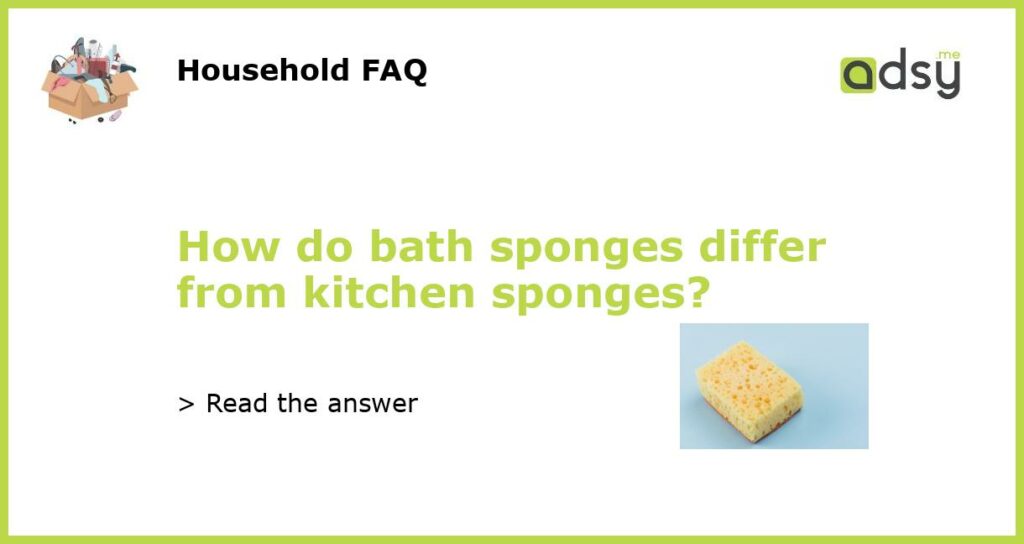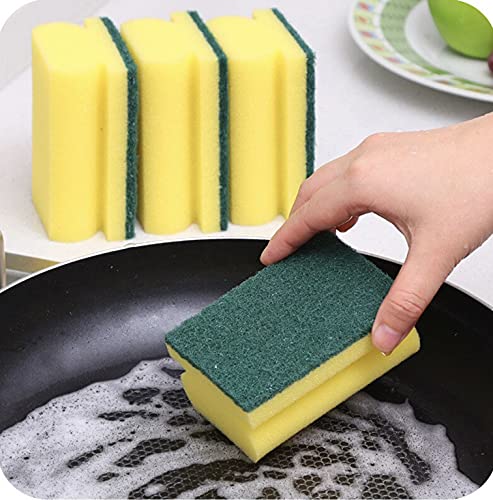Composition and Material
Bath sponges and kitchen sponges differ in their composition and material. Bath sponges are typically made from natural or synthetic materials that are soft, gentle, and designed for use on the delicate skin of the body. These materials can include natural sea sponges, loofahs, or synthetic materials like nylon or polyurethane foam. On the other hand, kitchen sponges are designed to be more durable and are often made from synthetic materials that can withstand scrubbing and cleaning tasks. These materials can include cellulose sponges, abrasive scrub pads, or even silicone sponges.
Shape and Design
The shape and design of bath sponges and kitchen sponges also differ. Bath sponges are often larger and have a more irregular shape to allow for better coverage and easier handling during bathing. They may have a rope or handle attached for convenience. Kitchen sponges, on the other hand, are usually smaller and have a more rectangular or square shape. This allows for more precise cleaning and easier maneuvering in tight spaces like pots, pans, or dishes.
Functionality and Usage
Bath sponges and kitchen sponges have different functionalities and intended uses. Bath sponges are primarily used for cleansing and exfoliating the skin. They create a lather when used with soap or shower gel and help to remove dirt, dead skin cells, and impurities from the body. Some bath sponges also have additional features like built-in soap dispensers or exfoliating textures. On the other hand, kitchen sponges are used for cleaning and scrubbing various surfaces in the kitchen. They are commonly used to wash dishes, countertops, and appliances, and may have abrasive surfaces or scrubbing pads to remove tough stains or grime.
Hygiene and Care
Hygiene and care requirements for bath sponges and kitchen sponges also differ. Bath sponges should be regularly cleaned and dried after each use to prevent the growth of bacteria or mold. They should also be replaced every few months, as they can become breeding grounds for bacteria over time. Kitchen sponges, on the other hand, should be replaced more frequently, as they come into contact with food particles and can harbor more bacteria. They should also be regularly sanitized and cleaned with hot water or disinfectant solutions to ensure food safety and prevent the spread of germs.
Availability and Pricing
Bath sponges and kitchen sponges are widely available in various stores and online retailers. However, bath sponges may have a wider range of options in terms of material, texture, and additional features. Natural sea sponges, loofahs, and various synthetic materials can be found in different shapes and sizes to suit individual preferences. Prices for bath sponges can vary depending on the material and brand, but they are generally more affordable compared to kitchen sponges. Kitchen sponges, on the other hand, are often sold in multipacks and can come in different types such as cellulose sponges, scrub pads, or silicone sponges. They are generally more expensive due to their durable construction and ability to withstand heavy-duty cleaning tasks.






